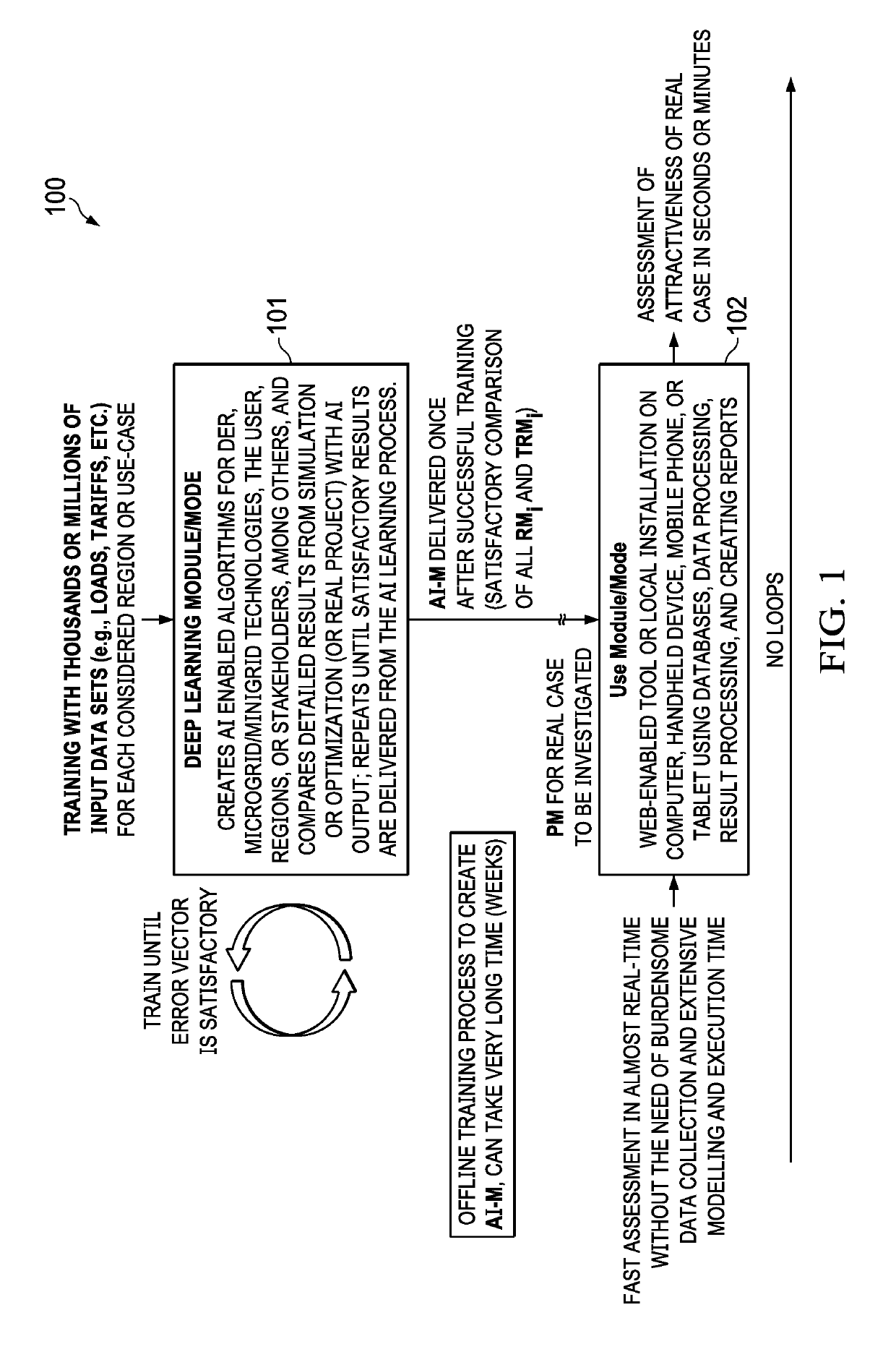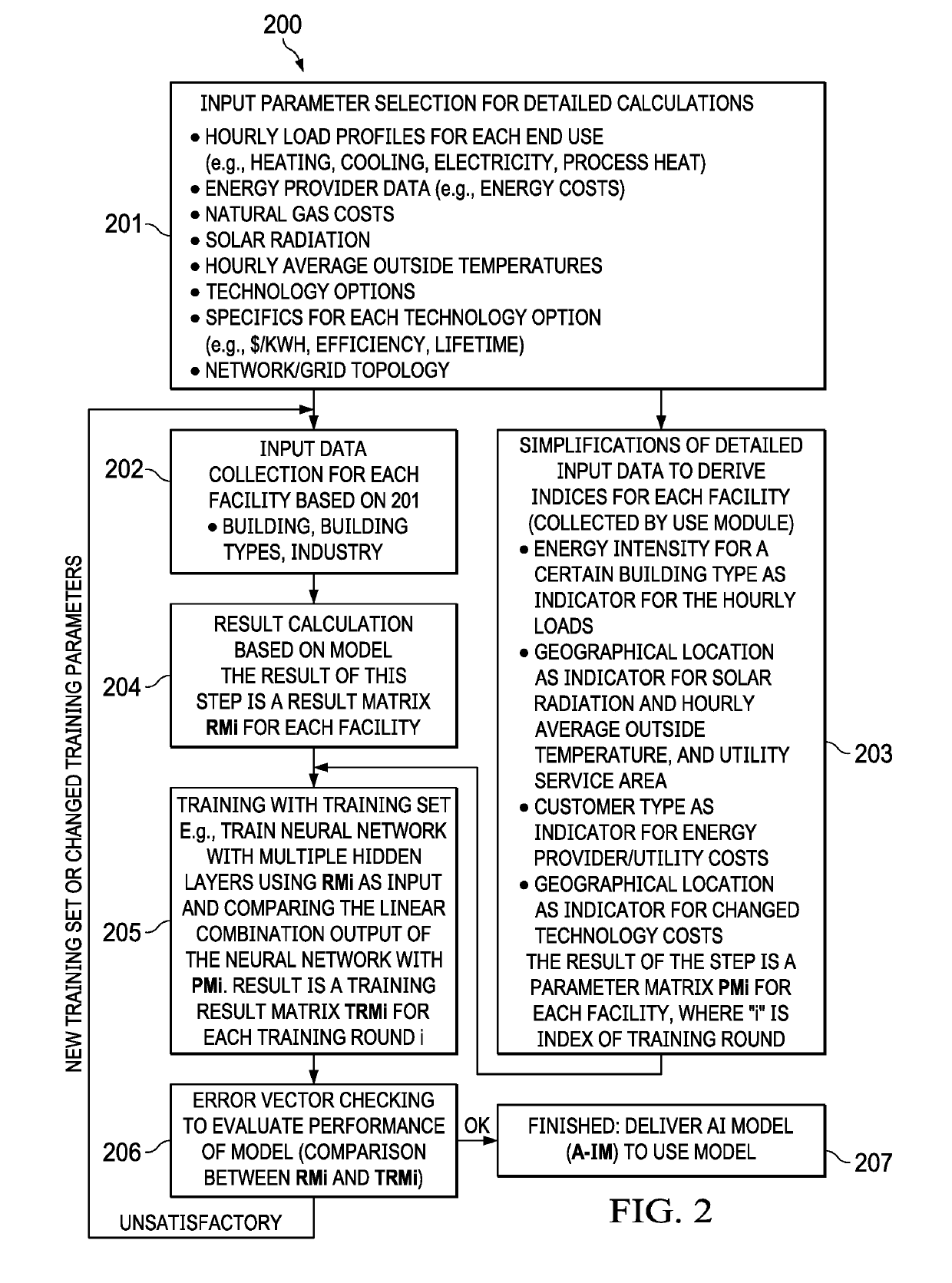Artificial intelligence microgrid and distributed energy resources planning platform
a technology of distributed energy resources and planning platform, applied in the field of cloud computing and computer information systems applications, can solve the problems of high cost of microgrid and distributed energy resources (der), no holistic online solution for analyzing buildings or geographic regions in a simple and fast manner, process can take weeks, etc., to save time, cost and computer power, and solve long processing time
- Summary
- Abstract
- Description
- Claims
- Application Information
AI Technical Summary
Benefits of technology
Problems solved by technology
Method used
Image
Examples
example processes
[0031]FIG. 2 is a flow diagram of a deep learning process performed by deep learning module 102 of the microgrid and DER planning platform 100 of FIG. 1, according to an embodiment.
Deep Learning Mode
[0032]In an embodiment, the deep learning module 101 implements process 200 using the computer architecture shown in FIG. 6. Process 200 begins by selecting input planning parameters (201), collecting input data for each facility of a microgrid / DER (202) and generating indices for use as training data for an AI model (203). The indices are used to simplify detailed input data for facilities, which can be easily collected by the user of the platform 100 using the use module 102. The result of the foregoing steps 201-203 is a Parameter Matrix (PM1) for each facility (e.g., for each building, building type, industry), where the subscript “i” is the ith facility under consideration by a stakeholder (e.g., an investor, technology vendor, energy provider, regulatory authority).
[0033]The PM1 co...
PUM
 Login to View More
Login to View More Abstract
Description
Claims
Application Information
 Login to View More
Login to View More - R&D
- Intellectual Property
- Life Sciences
- Materials
- Tech Scout
- Unparalleled Data Quality
- Higher Quality Content
- 60% Fewer Hallucinations
Browse by: Latest US Patents, China's latest patents, Technical Efficacy Thesaurus, Application Domain, Technology Topic, Popular Technical Reports.
© 2025 PatSnap. All rights reserved.Legal|Privacy policy|Modern Slavery Act Transparency Statement|Sitemap|About US| Contact US: help@patsnap.com



